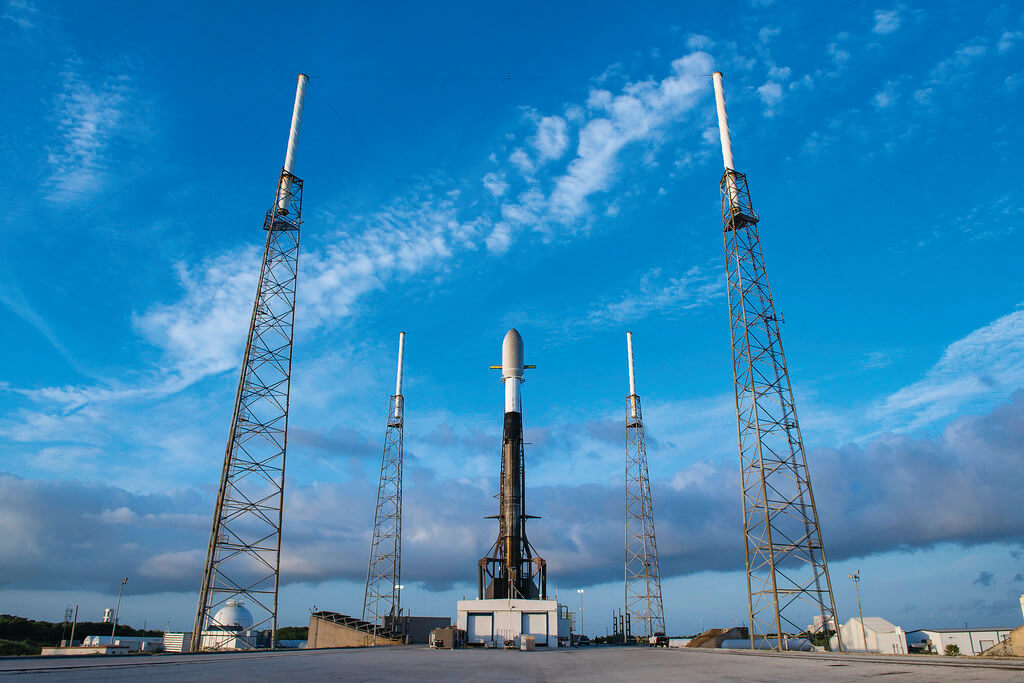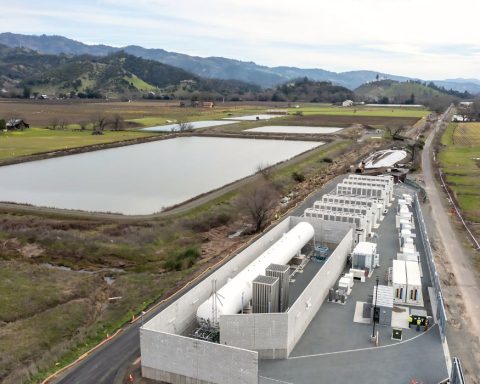The number of satellites that circle the globe is expected to rise dramatically over the next few years. Some of the current cohort of satellites bounce signals to our phones; others gather imagery of Earth’s surface. A growing field of satellite technology will be gathering information about greenhouse gas emissions.
The satellites using this technology won’t be offering pretty pictures; they’ll be doing chemistry, analyzing spectral fingerprints, and telling oil and gas investors where all the leaking methane is coming from. And their data is getting snatched up by firms that analyze the environmental credibility of corporations.
Raw, unstructured satellite data has become an essential tool for investors in the oil and gas sector. Energy companies have a reputation for poor disclosure on their emissions of methane, the number-one anthropogenic heat-trapping greenhouse gas. A recent International Energy Agency report found that methane emissions from the energy sector are 70% higher than the official figures being reported.
Investors increasingly equate poor ESG (environmental, social and governance) performance with material financial risk. Trillions of dollars are now aligning with ESG, which means that tracking corporate adherence to ESG principles has become big business – and large investment firms are increasingly using satellite data to inform their analytics.
Big asset management firms like BlackRock, State Street and Vanguard have internal analytic teams but also purchase data sets from analytics firms such as MSCI, Sustainalytics or Affinitiv, which are integrating satellite data into their corporate ratings.
“MSCI might buy that data from the satellite [data] company and then sell it on to State Street,” says Todd Cort, co-director of the Yale Center for Business and the Environment. “And then more and more frequently, MSCI will just buy the company itself because they’ve got good data investors want. We’ve actually been seeing that a lot lately – these data analytic firms buying up these satellite [data] companies and these social-media-scraping companies.” For example, in 2019, Moody’s bought California-based Four Twenty Seven.
Satellite data is such a hot commodity that investors are turning to it to solve all their transparency issues. And with increasing regulatory focus on methane emissions from the oil and gas industry, it’s no wonder satellite data products are evolving to accommodate this demand. A satellite data platform called MethaneScan, developed by start-up company Geofinancial Analytics, is now distributed by media conglomerate Bloomberg as part of the alternative data catalogue at Bloomberg Enterprise Access Point. And it is activist by design.
“[We] aim to drive rapid methane emissions reduction through satellite-enabled transparency and engagement,” says Mark Kriss, co-founder and CEO of Geofinancial, in an email. “[We] use empirical data and insights to enable major players in the capital, insurance and commodity markets to effectively engage with producers and incentivize rapid change.”
Much has changed in the last decade. In 2011, Montreal-based entrepreneur Stephane Germain founded a private satellite company called GHGSat and, in 2016, launched its demonstrator satellite, Claire. “We were just beginning to show how our demonstration satellite could detect emissions from space,” says Germain. “Today, we routinely detect emissions on a daily basis.” In May of this year, GHGSat launched three more methane-tracking satellites.
We know from over 10 years of doing field studies, every company that thinks they don’t have a [methane] problem does.
—Mark Brownstein, Environmental Defense Fund
Germain, too, says the “surge in ESG investing has driven significant interest from the financial services community.”
The New York–based non-profit Environmental Defense Fund (EDF) has spent more than a decade trying to measure and understand the methane over the Permian Basin, the world’s largest oil patch, in the southwestern United States. EDF research revealed that as much as three times more methane emissions have been identified than companies self-reported to the U.S. Environmental Protection Agency. To get a handle on emissions, the environmental group has used handheld devices, airborne spectrometers and NASA satellite data, which also had to be analyzed.
Now it’s launching its own satellite.
“We know from over 10 years of doing field studies, every company that thinks they don’t have a problem does. What’s been missing is the data to show,” EDF’s Mark Brownstein said in a 2021 interview. That led EDF to raise the US$88 million it would take to fund its own satellite project, MethaneSAT. The goal: “Making that data transparent to the public, to policy-makers, to their investors, to competitors,” Brownstein said. “Now everybody can see what’s going on out in the field.”
Cort has advised many companies on activist investor resolutions. “Those companies that are exposed by organizations like EDF, they get bad press … They get regulators breathing down their necks saying, ‘Why aren’t you dealing with your methane issues?’ They may not get as many permits or royalty holders signing up for their extraction activities.”
The most famous investor uses of satellites involve imagery that’s used to, say, count cars in Walmart parking lots or track shadows of Chinese oil tanks through Google Earth or web-geo platform Planet. A wide range of environmental groups also use visual imaging satellites: Global Forest Watch surveys forests for illegal logging; Global Fishing Watch surveys the open seas for illegal fishing. But methane satellites don’t provide visual imagery; they use spectroscopy.
Kelly Vaughn, spokesperson for non-profit Carbon Mapper (which runs a satellite program to track methane and CO2 emitters), explains that imaging spectroscopy “measures solar backscattered radiation, where methane and CO2 are known absorbers.” The rest is a lot of math work.
“For as much as people are focused on the hardware, the satellite, the sensor, what you get from the satellite is basically a set of ones and zeroes. And it’s a lot of data,” Brownstein said. “Equally important is the data science behind this.”
The California Air Resources Board is planning to use Carbon Mapper to strengthen and enforce its methane-reporting framework. When MethaneSAT and Carbon Mapper are up and running in 2023, that stream of continuous data should help rapidly advance greenhouse gas regulation and enforcement.
[We] aim to drive rapid methane emissions reduction through satellite-enabled transparency and engagement.—Mark Kriss, co-founder and CEO of Geofinancial
Canada’s GHGSat will also be contributing its data sets, along with those of European satellites, to a global methane-monitoring clearing house called the International Methane Emissions Observatory (IMEO). As the world’s largest importer of oil and gas, the EU Commission created IMEO to gather the hard data on which to build its methane regulatory framework, which is currently further along than those of Canada and the United States.
EU demand for robust methane-emissions transparency is precisely the future investors are watching out for. And private companies like Geofinancial and GHGSat can best spur both non-profit and investor activism by providing crystal clarity in the data, unfogged by omissions. Even so, satellite-based climate activism is very much still in a nascent, unregulated stage.
“There are lots of loose ends that need to be tied up for successful activism with these data,” says Deborah Gordon, senior principal for the Climate Intelligence Program at RMI (previously the Rocky Mountain Institute). RMI has launched a platform specifically geared to facilitating reporting of oil and gas emissions data and related planning.
“What will regulators do when a super emitter is spotted?” says Gordon. “And what emissions level constitutes a super emitter?”
Regulation of greenhouse gases has been slow. In California, Carbon Mapper data will ease its way into an ongoing regulatory framework that has been in the making for more than 15 years. Investors have recently heard from financial regulators in Canada, the United States and the EU putting forth greenhouse gas disclosure proposals. But in the United States at least, the Securities and Exchange Commission’s proposed disclosure rule is expected to meet a lengthy trial by litigation.
“I think the lawsuits are already lining up,” Cort says.
With regulatory signals up in the air, conservative institutions aren’t approaching satellite data as actionable yet.
“Most companies are biding their time,” Gordon says. “But there is general interest.”
At a time when scientists are pinning hopes on reducing methane emissions as a Hail Mary pass to avert climate disaster, keeping an eye on elusive emissions is critical. As the activist investors of tomorrow turn to the skies, methane emissions will have nowhere to hide.
Marianne Messina is a freelance journalist focusing on sustainability and conservation issues, particularly where systems and remote technologies are involved.







